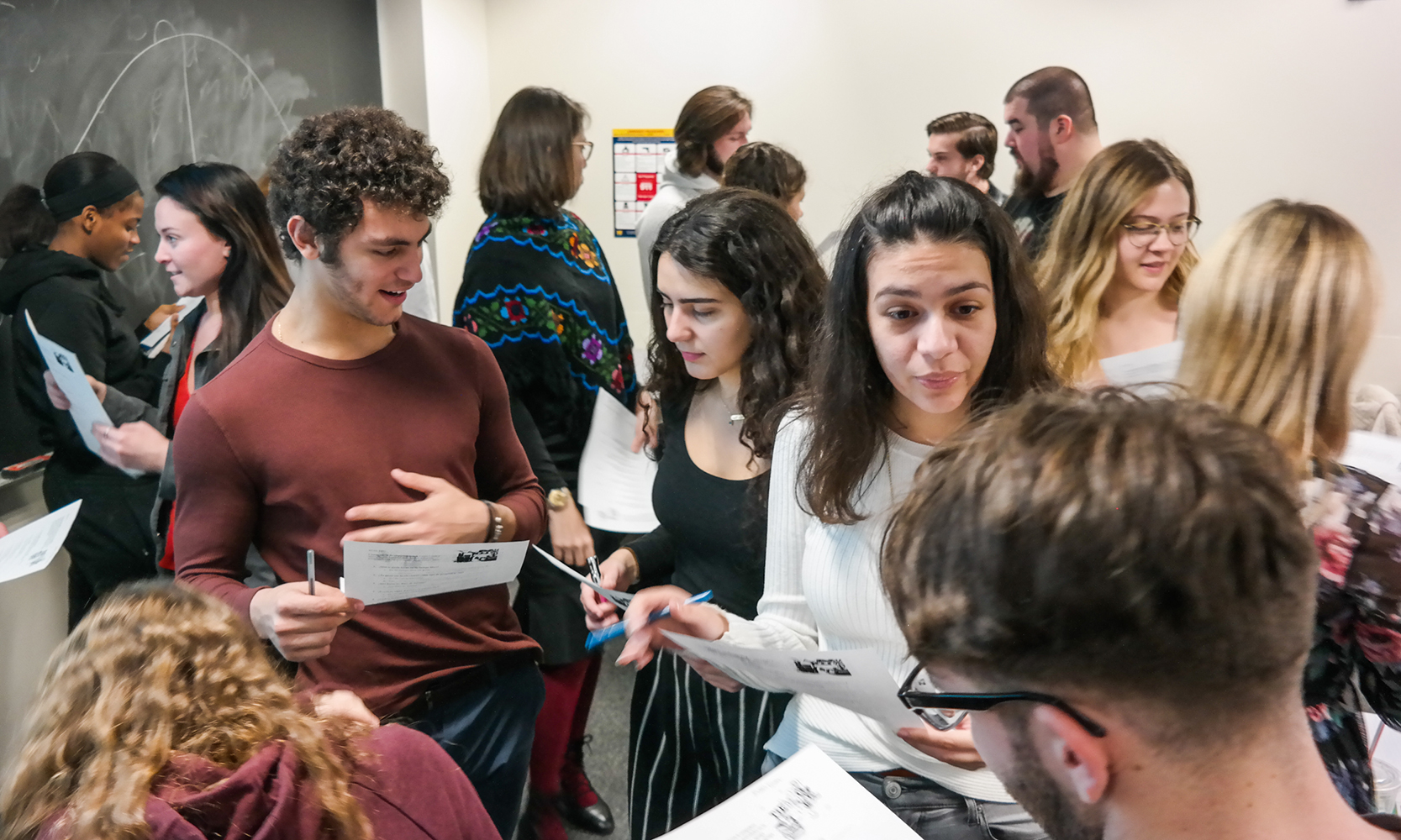
UM-Dearborn instructional designer Alfonso Sintjago is a big believer in digital education, but he’ll be the first to tell you that some courses are better fits for online makeovers.
For a long time, language instruction has been among those subjects that conventional wisdom held was a tough one to put online. “Speaking is a major part of learning a language, and there are obviously certain advantages to doing that face-to-face,” Sintjago said. “That’s part of the reason you’ve seen this explosive growth in online language learning apps, but you haven’t seen quite as many universities attempt hybrid or all-online language courses — even if they have a lot of other online offerings.”
French Lecturer Jerilyn Mannion admits she was among those who had some reservations when she decided to take on the challenge of designing a new hybrid version of her French course, which debuts at UM-Dearborn next semester. But once she explored the slate of new learning tools that were available, she started to see how a hybrid course might not just be as effective, but possibly more effective for some students.
As is typical for hybrid courses, Mannion, Sintjago and instructional designer Belen Garcia embarked on their redesign by first identifying which class activities would be easiest to shift to the digital space. Mannion said despite the importance of conversation, there are many components — including vocabulary, grammar, reading, writing and cultural education — that work just fine online. To teach those things, she’s actually ditching the traditional textbook in favor of a new learning system called Français Interactif, an Open Educational Resource (OER) developed by the University of Texas. One additional perk for students: The system is completely free.
The basic idea is that the students can use Français Interactif to learn new vocabulary and work through practice exercises outside of the class. There are all sorts of cool tools, too, like videos of native speakers and students engaging in conversations to help with pronunciation. Then, during class time, they can hone in on practicing real-time conversation skills using all that new vocabulary.
Mannion said that could be particularly helpful for students who struggle to master new material quickly.
“There is a lot of anxiety associated with speaking a new language,” she explained. “So one of the amazing things about this system is that you can watch the videos and review the vocabulary and practice your pronunciation as much as you need to feel comfortable. Then you’re much better prepared to make that leap into conversation.” In fact, she’s using Français Interactif in her traditional face-to-face course this semester, and she’s already observed that her students seem more confident speaking in class.
She’s even experimenting with bringing some of the conversational instruction online. Using a tool called Flipgrid, students can participate in video message board conversations. As in a traditional text thread, someone starts the conversation by recording a video and other students post their responses. It’s a so-called “asynchronous” learning activity, so it doesn't quite replicate a real-time conversation. But because students can practice their responses, it can function like advanced training wheels for in-class conversations.
Lecturer Sofia Calzada-Orihuela is also planning to use Flipgrid in the new hybrid version of her Spanish course next semester. In fact, she’s already recorded the video that will seed the conversation thread, featuring her voice animating a hand puppet raccoon whose favorite foods are “frutas,” “vegetales” and “basura” (garbage).
“Alfonso got us these puppets, because it can be a good tool for students who feel nervous speaking,” Calzada-Orihuela explained. “But then I got nervous about recording a video! So I grabbed the raccoon puppet — I picked him because he was cute. And it really works: When it was the puppet talking, I was much more comfortable. If I was intimidated, imagine how our students feel facing the camera and speaking a second language.”
Calzada-Orihuela and her colleague, Associate Professor Francia Martinez Valencia, will have to call on all their creativity for their hybrid course. At present, there isn’t an OER system for Spanish that’s quite as comprehensive as Français Interactif. So instead, they’ll be building most of the vocabulary lists, online exercises and quizzes themselves; and supplementing them with a curated list of nontraditional class resources like Spanish-language TED Talks, podcasts and soap operas. That’s something Calzada-Orihuela tried last semester in her advanced conversation course and the students loved it.
“I suppose I went a little rogue with that class,” she said, laughing. “But those kinds of materials really are the most authentic. And when you are doing something new, you have to be brave.”




